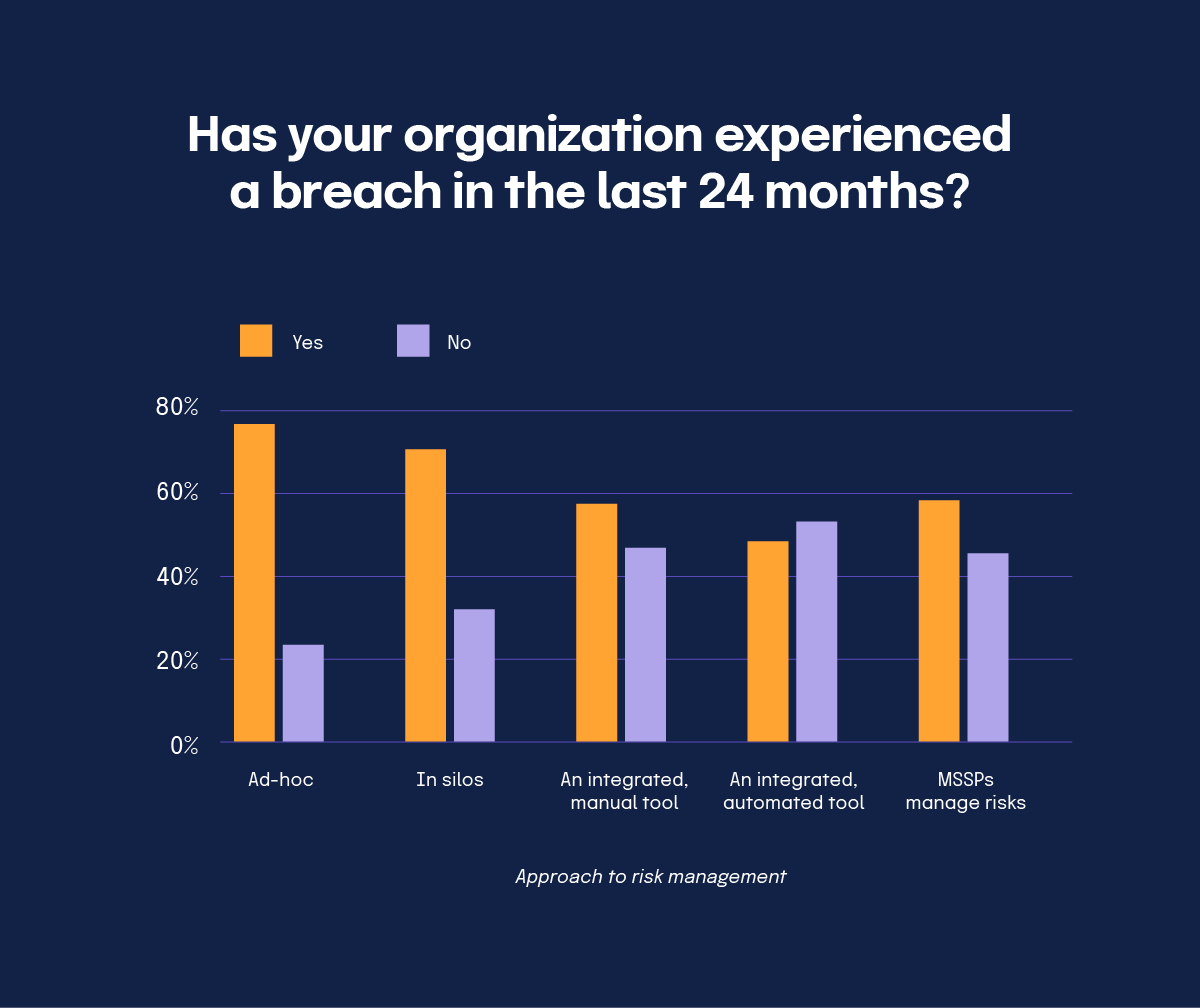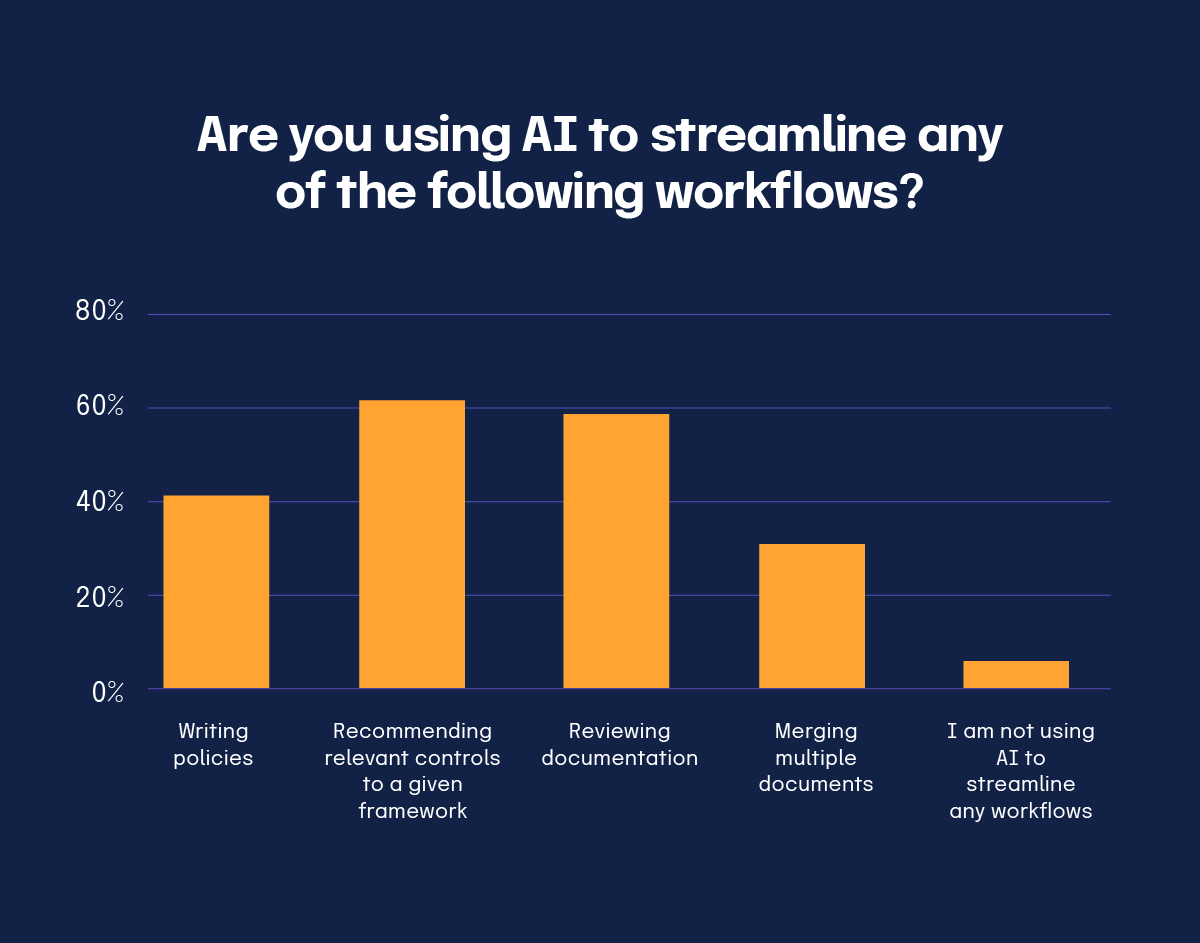
2024-3-27 02:29:4 Author: securityboulevard.com(查看原文) 阅读量:8 收藏

Each year, we ask over 1,000 IT and GRC professionals about their priorities for the coming year and operational aspects, like changes to budgets, staffing, challenges, and much more. What we found was this: in the rapidly evolving landscape of governance, risk, and compliance (GRC), siloed approaches are becoming increasingly obsolete.
Our fifth annual IT Risk and Compliance Benchmark report revealed a significant industry shift towards unifying risk and compliance management, reflecting a growing realization among GRC professionals that operationalizing risk and compliance together results in greater security and efficiency. Let’s discuss key findings from this part of the survey and what this means for your GRC operations.
The trend toward unification

Threats to data security and regulatory compliance are constantly evolving in our interconnected world, and the need for a unified approach to risk and compliance management has never been more pressing. Our survey results indicated a clear trend toward breaking down data silos between risk management and compliance operations. Only 19% of respondents now manage IT risks in siloed departments, processes, or tools, a notable decrease from 31% in the previous year.

This shift underscores a broader industry movement towards integration, with 18% of respondents reporting an integrated view of managing their unique set of risks, up 57% from the prior year. By integrating risk and compliance activities, organizations can achieve greater efficiency, transparency, and agility in identifying and mitigating risks while ensuring adherence to regulatory requirements.
The impact of unifying risk and compliance

The benefits of unification extend beyond operational efficiency. Our findings indicated that organizations slow to embrace integrated approaches are more susceptible to breaches and disruptions. Alarmingly, 84% of respondents still operating in silos experienced supply chain disruptions related to cybersecurity, and 70% reported breaches within the last 24 months.

In contrast, those with integrated risk and compliance activities experienced significantly fewer breaches and incidents at only 46%, emphasizing the critical role of unifying risk and compliance operations in enhancing security posture. By breaking down silos and fostering collaboration between risk and compliance teams, organizations can proactively identify and address potential vulnerabilities, reducing the risk of costly data breaches and compliance violations.
A promising shift to centralized risk and compliance management

Last year, 68% of respondents reported having a centralized GRC program, a figure that has witnessed a substantial leap to 83% in 2024. This shift towards centralization holds promise for a more integrated and streamlined approach to governance, risk, and compliance. However, the optimism surrounding centralized GRC programs is met with a stark reality: only 18% of respondents have successfully tied together risk and compliance activities. This disconnect between high confidence and the actual integration of GRC processes reveals a persistent challenge reminiscent of last year’s report, where confidence in addressing risk did not align with the efficacy of risk management processes.

Harnessing technology for efficiency

The adoption of technology-driven solutions is gaining momentum, with 70% of respondents employing software to monitor security controls and report on compliance postures. Additionally, there’s a growing reliance on purpose-built software for IT compliance operations, signaling a departure from traditional spreadsheet-based solutions.

This shift towards technology-driven solutions reflects a broader industry recognition of how effective automation is when solving for the challenges posed by compliance requirements. By leveraging purpose-built software tools, organizations can streamline compliance operations, enhance visibility into risk postures, and make more informed decisions to mitigate potential risks.
The role of AI
Looking ahead, AI holds tremendous promise in optimizing manual risk and compliance workflows. 65% of respondents believe AI has the most potential to enhance efficiency, with 52% expressing confidence in its ability to streamline manual tasks.

By harnessing the power of AI-driven analytics and automation, organizations can streamline repetitive tasks, identify emerging risks more quickly, and make data-driven decisions to enhance their risk management and compliance practices. As AI technology evolves, organizations must embrace innovation and explore new ways to leverage AI-driven solutions to stay ahead in an increasingly complex and dynamic risk landscape.
Embracing a unified approach

As organizations navigate an increasingly complex risk landscape, the imperative for integration has never been clearer. By breaking down silos and embracing integrated, automated solutions, businesses can enhance their security posture, streamline compliance operations, and stay ahead in an ever-evolving GRC landscape.

Ready to unlock the full potential of unifying your risk and compliance operations? Dive deeper into our comprehensive report to gain valuable insights, benchmark your practices against industry standards, and chart a course towards enhanced risk management and compliance excellence. Download your copy today to stay ahead in the age of unified GRC.
The post 2024 IT Risk and Compliance Benchmark Report Findings: Why Unifying Risk and Compliance Work Is No Longer Optional appeared first on Hyperproof.
*** This is a Security Bloggers Network syndicated blog from Hyperproof authored by Erin Nelson. Read the original post at: https://hyperproof.io/resource/unifying-risk-and-compliance-work-benchmark-2024/
如有侵权请联系:admin#unsafe.sh